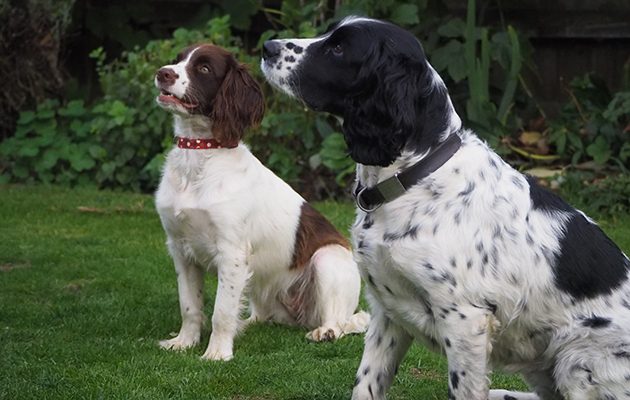Banned by many professional gundog trainers and viewed as bribes, David Tomlinson breaks the taboo surrounding edible rewards
Though edible rewards are banned by many professional trainers, or viewed as bribes by others, some advocate the use of gundog training with treats. David Tomlinson decides whether reward-based training is useful, or best avoided.
We may be resist to treats, but are we over-reliant on the gundog whistle? Read gundog whistles: more than just hot air? for David Tomlinson’s advice.
TRAINING WITH TREATS
We all know that the best way to a dog’s heart, and its head, is through its stomach but the use of edible rewards is curiously taboo in the world of gundog training. It may stem from the days of the dog breakers, the forerunners of today’s professional trainers, who would never have considered reward-based training. Ask a top trainer today what sort of edible rewards he or she gives his or her dogs and you are likely to get the sort of look usually reserved for people who let their dog sit on the sofa.
I have numerous gundog training books, dealing with spaniels, retrievers and HPRs, but few mention, let along discuss, rewards. However, Peter Moxon, in his classic Gundogs: Training and Field Trials (first published in 1952 and still in print today) devotes three long paragraphs to the subject, though apologises for being unnecessarily long-winded. He admits that the moderate use of rewards with certain pupils for certain items can be beneficial in the early stages of training, but adds that if you “overdo the business there will be regrets”. Eventually, he suggests, the dog will regard you as no more than a portable food bin.
Oh well, I now know why my dogs look at me like they do, for along with numerous amateur trainers, I usually have a biscuit or two in my pocket. I worked out long ago that an edible reward was one of the ways of keeping my dog attentive and interested in me. Not that it always works. My first springer loved food but in the heat of the chase she would spit out a biscuit if there was a pheasant around.
Perhaps it’s a sexist issue, for I have found that female handlers are far more likely to use edible rewards than men. In her book In the Bag!, Margaret Allen reveals that she believes treats do have a place in training, though arguing that they should be small and not take a lot of chewing before they are swallowed. That makes sense. If you are rewarding a dog during training you want to keep its mind on the job, not for it to sit down and have a lengthy munch. Allen also advises that treats should be used sporadically and randomly, and not every time a dog is asked to do something, nor every time it does it correctly. I agree, as you don’t want to go out with a whole bag of biscuits in your pocket.
Lez Graham, author of the highly successful Pet Gundog training series, is another female trainer who advocates food rewards, encouraging their use as a motivator when trying new exercises. Her technique for training a dog to sit, using food, works every time. Take the treat between your index finger and thumb with the rest of your fingers straight but not splayed. Hold the treat just above the dog’s head and, in and up and over movement, slowly take the food towards the dog’s hindquarters. As the dog puts his
backside down, say “sit”, then praise and give the treat.
WHICH TREAT TO USE
Quite what form the edible reward should take depends on the dog and how much reward you want to give it. Many dogs will be motivated by small biscuits or even the same kibble they get in their supper, but others will regard such morsels as not worth working for, so an upgrade might be needed. Small pieces of hard cheese will please most dogs, and the smellier the better. However, for the most obstinate animals, or those that are not much interested in food, there’s nothing to beat hot chicken or gammon. Such a premium reward should be held in reserve for dogs that show a defiant attitude to recall, as this is one way to cure them. And for instant response, make sure that the dog is hungry.
Almost all trainers agree that edible rewards shouldn’t be used when training the retrieve, as you are in danger of the returning dog spitting out the dummy, or bird, in its eagerness to get to the food. This will lead to disaster when the dog starts retrieving runners, only to let them go within sight of your hands. The retrieve should be, and for most dogs usually is, sufficient reward in itself.
There are, of course, other ways to reward dogs than with food, and for many lots of praise is sufficient. You might use edible treats (known as bribes in the Tomlinson household) in the early stages of training, but you should be able to work away from them as the dog progresses and discovers that the ultimate reward is keeping its master or mistress happy. Handlers of police search dogs usually reward their dogs with tennis balls, but what works in a drug dealer’s den is not really suitable for the shooting field.
Even the best trained of dogs will appreciate a biscuit or two during a day’s work, and I don’t think you should ever be ashamed to indulge your dog in this way. My one recommendation, however, is to always remember to remove all biscuits from your pockets when going to a meet of foxhounds, as otherwise you might prove more popular than you had anticipated.





